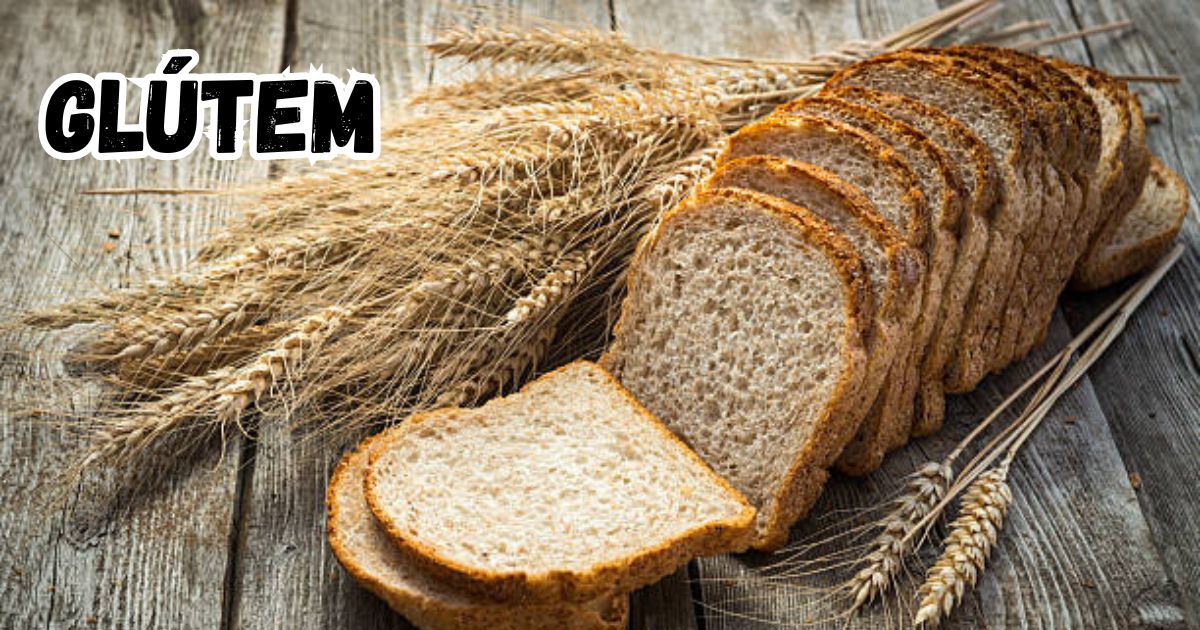Glútem is a term used to describe a composite of storage proteins found in cereal grains, particularly in the endosperm. These proteins, primarily prolamins and glutelins, play a crucial role in the baking process by providing dough with its unique viscoelastic properties. This allows baked goods to rise and maintain their shape. Glútem is integral to the texture and consistency of many staple foods, including bread, pastries, and pizza dough. Understanding glútem is essential for both culinary professionals and home cooks alike, as it influences the quality and performance of baked products.
Importance in Baking and Food Industry
In the food industry, glútem is valued for its ability to create the desirable texture in various baked goods. The interaction between gliadin and glutenin, the primary proteins in glútem, forms a network that traps air bubbles during baking. This network is crucial for achieving the light, airy texture characteristic of well-baked bread and other products. As a result, glútem-rich grains are highly sought after for their functional properties, making them a key ingredient in many commercial and artisanal recipes. Its importance extends beyond just texture; glútem also contributes to the nutritional profile of baked goods, offering protein and other essential nutrients.
Understanding Glútem
The Science Behind Glútem
Glútem is composed of two main types of storage proteins: prolamins and glutelins. Prolamins, such as gliadin, are responsible for the extensibility of dough, allowing it to stretch. Glutelins, including glutenin, contribute to the dough’s elasticity, enabling it to maintain its shape. When flour is mixed with water, these proteins interact to form a cohesive, elastic network. This network is critical for trapping air bubbles and allowing the dough to rise during baking. The specific balance and quality of these proteins determine the final texture and volume of baked products.
Glútem vs. Gluten: Key Differences
While glútem and gluten are often used interchangeably, there are distinct differences between them. Glútem refers to the composite of prolamins and glutelins in cereal grains, while gluten specifically refers to the proteins found in wheat and related grains. The term “gluten” is more commonly used in mainstream food science, but glútem encompasses a broader range of proteins found in various grains. The differences in composition can affect how these proteins interact with other ingredients and contribute to the overall quality of the dough. Understanding these differences is crucial for optimizing recipes and ensuring the desired results in baking.
The Nutritional Profile of Glútem
Nutritional Components of Glútem
Glútem is a rich source of proteins, primarily gliadin and glutenin. These proteins are essential for providing the structure and elasticity needed in dough. In addition to protein, glútem-containing grains often offer a range of vitamins and minerals. For example, whole grains that contain glútem can be good sources of B vitamins, iron, and magnesium. These nutrients contribute to overall health and well-being, making glútem-rich grains a valuable part of a balanced diet. However, it’s important to consider individual dietary needs and potential sensitivities when incorporating glútem into your meals.
Health Benefits of Glútem
The health benefits of glútem extend beyond its role in baking. The proteins found in glútem, such as gliadin and glutenin, offer significant nutritional value. They provide a high-quality source of protein that supports muscle maintenance and repair. Additionally, glútem-rich grains can aid in digestive health by providing dietary fiber, which promotes regular bowel movements and supports gut health. The inclusion of glútem in a balanced diet can contribute to overall health, particularly when consumed as part of whole grains that offer additional nutritional benefits. However, individuals with gluten sensitivities or celiac disease should avoid glútem-containing products to prevent adverse health effects.
Culinary Uses of Glútem
How Glútem Affects Dough and Baking
Glútem plays a pivotal role in the texture and performance of dough. When flour containing glútem is mixed with water, the proteins form a sticky, elastic network that is essential for creating the desired texture in baked goods. This network traps air bubbles, allowing the dough to rise and develop a light, airy structure. The viscoelastic properties of glútem are what give bread its chewy texture and pastries their flakiness. Understanding how glútem interacts with other ingredients, such as yeast and fats, can help bakers achieve optimal results in their recipes.
Popular Recipes Featuring Glútem
Glútem is a key ingredient in many popular recipes, including bread, pastries, and pizza dough. For bread, glútem contributes to the chewy texture and helps the dough rise properly. In pastries, it provides the structure needed for flaky layers, while in pizza dough, it helps create a crisp, yet chewy crust. Recipes that utilize glútem effectively take advantage of its unique properties to enhance the texture and quality of the final product. For those looking to explore glútem-rich recipes, classic options like sourdough bread, croissants, and homemade pizza offer a delicious way to experience the benefits of this essential ingredient.
Glútem in Sustainable Agriculture
Cultivating Glútem-rich Crops
Sustainable cultivation of glútem-rich crops involves several best practices to ensure environmental responsibility and crop quality. Techniques such as crop rotation, reduced use of chemical fertilizers, and integrated pest management help maintain soil health and reduce environmental impact. By adopting these practices, farmers can produce high-quality glútem-rich grains while minimizing harm to ecosystems. Sustainable agriculture also focuses on conserving water resources and reducing greenhouse gas emissions, contributing to a more eco-friendly approach to food production.
Advancements in Glútem Production
Innovations in glútem production are driving improvements in both quality and sustainability. Advances in biotechnology and crop breeding have led to the development of glútem-rich crops with enhanced properties, such as increased protein content and better dough performance. Emerging technologies, such as precision agriculture and genetic modification, are also playing a role in optimizing glútem production. These advancements aim to meet the growing demand for high-quality glútem while addressing environmental concerns and improving overall crop yield and resilience.
Potential Health Concerns
Common Allergies and Sensitivities
While glútem is beneficial for many, it can cause adverse reactions in some individuals. Allergies and sensitivities to glútem are relatively rare but can lead to symptoms such as bloating, abdominal pain, and fatigue. For those with celiac disease, consuming glútem can trigger severe immune responses and damage the small intestine. It is essential for individuals with known allergies or sensitivities to avoid glútem-containing products to prevent health complications. Proper labeling and awareness of glútem in food products are crucial for managing these concerns effectively.
Research on Glútem and Health
Recent studies have investigated the impact of glútem on health, with a focus on its role in various conditions such as celiac disease and non-celiac gluten sensitivity. Research has shown that while glútem is a key component in many foods, it can cause significant issues for individuals with specific health conditions. Ongoing research aims to better understand these effects and develop strategies for managing glútem-related health issues. Expert opinions and scientific findings continue to shape recommendations for glútem consumption and highlight the importance of individualized dietary choices.
Market Trends and Availability
Where to Find Glútem Products
Glútem-containing products are widely available in both online and physical retail stores. Specialty stores and health food shops often carry a range of glútem-rich grains and baked goods. Online retailers also offer a variety of glútem products, including flours, bread, and pasta. When shopping for glútem, it’s important to check product labels and ensure that the items meet your dietary preferences and needs. The increasing availability of glútem products reflects their popularity and the growing interest in understanding their benefits and uses.
Cost and Value Analysis
The cost of glútem-containing products can vary depending on factors such as quality, brand, and production methods. Generally, glútem-rich grains and baked goods are competitively priced, with options available to suit different budgets. Value for consumers is determined by factors such as nutritional content, product quality, and overall satisfaction. When evaluating glútem products, consider the cost relative to the benefits they offer, including their nutritional value and contribution to a balanced diet. By making informed choices, consumers can enjoy the benefits of glútem while managing their food expenses effectively.
Also Read: Awkauro
Incorporating Glútem into Your Diet
Meal Planning with Glútem
Incorporating glútem into your diet can enhance your meals with its unique properties and nutritional benefits. Planning meals that feature glútem-rich grains and products can provide variety and improve the texture of your dishes. Sample meal ideas include using glútem-containing flours for baking bread, preparing pizza dough from scratch, or adding glútem-rich grains to salads and soups. Cooking with glútem can be both enjoyable and rewarding, as it allows you to explore new recipes and make the most of its functional properties.
Glútem vs. Other Protein Sources
When comparing glútem to other protein sources, it is important to consider factors such as nutritional content, dietary preferences, and potential sensitivities. Glútem provides a high-quality protein source that is beneficial for muscle maintenance and overall health. However, for individuals with allergies or sensitivities, alternative protein sources such as legumes, nuts, and seeds may be preferable. Understanding the benefits and limitations of glútem in comparison to other protein sources can help you make informed dietary choices and ensure a balanced and nutritious diet.
The Future of Glútem
Emerging Technologies in Glútem Production
The future of glútem production is shaped by advancements in technology and research. New innovations, such as precision agriculture and genetic modification, are improving the quality and sustainability of glútem-rich crops. These technologies aim to enhance protein content, dough performance, and crop resilience, addressing the growing demand for high-quality glútem products. As research continues to evolve, we can expect further improvements in glútem production, leading to more efficient and environmentally friendly practices in the food industry.
Consumer Trends and Preferences
Consumer trends and preferences play a significant role in shaping the future of glútem. Increasing awareness of dietary needs and health benefits has led to a growing interest in glútem-rich products. Shifts in dietary choices, such as the rise of plant-based and gluten-free diets, are influencing the demand for alternative protein sources and glútem products. Understanding these trends can help food producers and consumers stay informed about emerging preferences and adapt to changes in the market. The future of glútem will be influenced by both technological advancements and evolving consumer expectations.
Conclusion
In summary, glútem is a composite of storage proteins that plays a vital role in baking and food production. Its unique properties, including the interaction between gliadin and glutenin, contribute to the texture and rise of dough. Glútem-rich grains offer significant nutritional benefits, including protein and essential vitamins. Sustainable farming practices and advancements in production technology are shaping the future of glútem, while consumer trends continue to influence its role in the food industry.









